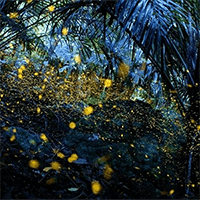- Age 6~Age 100
- 1~2 hours
- 10:00 / 14:00 / 19:00
We offer a curriculum from beginner to advanced. From hand forming to string making, board making, and electric potter's wheel, we will teach you according to your request. Various decoration techniques are also incorporated each time. In addition, you can try a wide range of pottery techniques such as anagama kiln practice with firewood, Shino ware, carbonization firing, and coloring. We have about 20 types of clay and more than 20 types of glaze. Even those with long pottery experience should be satisfied. *In the case of an electric potter's wheel, more clay is used, so the fee will be 1,100 yen plus the hand-twisting fee.
- Age 18~Age 99
- 2~3 hours
- 09:00
At the Kanfu Pottery Hall, a guidance facility for the Kanfu Ancient Kiln Site, a nationally designated historic site where sueki, said to be the origin of Bizen ware, was fired, a Bizen artist will explain the history of Bizen ware, followed by a Bizen ware making experience. After the experience, you will have the opportunity to stroll through Shiomachi Karakoto Street, which retains the atmosphere from the Edo period to around 1955 and is home to many nationally registered cultural properties, eat the local dish "Suifu no Jabu Jabu" served on Bizen ware, and interact with local people.
- Age 16~Age 99
- 1~2 hours
- 10:00 / 14:00
The back side of the colorful color. Among the many "traditions" and "evolutions" of Nishikiyama kiln, there are many fans in the world view and charm of the work, and we pursue "Kinrande" works using gold leaf that we create independently. Kinrande kiln. The second generation owner, Minori Yoshita, is widely known as a living national treasure of Kutani ware. In this program, you can see the inquisitive spirit transmitted to the Nishikiyama kiln and experience a part of it in order to demonstrate the creativity that can be said to be a transcendental technique that looks very profane. Nishikiyama kiln with a history of over 100 years. In addition to traditional techniques, we are also working on new things in the face of the big question, "How will we deliver it in the next 100 years?" We will review traditional techniques, search for a way that is suitable for our current life, and train the staff of the kiln. Nishikiyama kiln manufacturing aims to integrate tradition and innovation. "Kinrande" Kinrande refers to the decorative technique of fixing gold on colored ceramics and its works. Beginning with the Song dynasty in China, it flourished from the Ming dynasty to the Qing dynasty. In Japan, the Kinrande appeared from the Genroku era of Edo, using the Ming dynasty's Jingde Town kiln as an example, and it resembled the "Kinrande" woven fabric woven with gold thread and cut gold leaf, so it came to be called by this name in Japan. rice field. There are techniques such as "drawing gold" to draw a line with gold paint, "swinging gold" to scatter gold powder, and "pasting gold" to paste gold leaf. * For foreign nationals: Information on the day will be in Japanese only.
- Age 13~Age 99
- 1~2 hours
- 10:00 / 14:00
The back side of the colorful color. Among the many "traditions" and "evolutions" of Nishikiyama kiln, there are many fans in the world view and charm of the work, and we pursue "Kinrande" works using gold leaf that we create independently. Kinrande kiln. The second generation owner, Minori Yoshita, is widely known as a living national treasure of Kutani ware. In this program, you can see the inquisitive spirit transmitted to the Nishikiyama kiln and experience a part of it in order to demonstrate the creativity that can be said to be a transcendental technique that looks very profane. Nishikiyama kiln with a history of over 100 years. In addition to traditional techniques, we are also working on new things in the face of the big question, "How will we deliver it in the next 100 years?" We will review traditional techniques, search for a way that is suitable for our current life, and train the staff of the kiln. Nishikiyama kiln manufacturing aims to integrate tradition and innovation. "Kinrande" Kinrande refers to the decorative technique of fixing gold on colored ceramics and its works. Beginning with the Song dynasty in China, it flourished from the Ming dynasty to the Qing dynasty. In Japan, the Kinrande appeared from the Genroku era of Edo, using the Ming dynasty's Jingde Town kiln as an example, and it resembled the "Kinrande" woven fabric woven with gold thread and cut gold leaf, so it came to be called by this name in Japan. rice field. There are techniques such as "drawing gold" to draw a line with gold paint, "swinging gold" to scatter gold powder, and "pasting gold" to paste gold leaf. * For foreign nationals: Information on the day will be in Japanese only.
- Age 5~Age 100
- Within 1 hour
Use the ceramic art for paint, draw and your own favorite words or pictures, patterns freely, is a picture with experience plan foolproof. By hope, for those who want to challenge the Advanced Administration is, paste the cut-out paper to vessel was unglazed, you can also painting experience of "Miyama Japanese paper stencil dyeing" to instill the pigment with a brush.
最近チェックしたプラン
Please wait a moment
![[Saitama/ Kuki] From hand-climbing to electric wheel! Enjoy from beginner to advanced! Ceramic art experienceの画像](https://img.activityjapan.com/10/11969/10000001196901_i0qd2Lmz_3.jpg?version=1571373974)
![[Okayama, Setouchi City] At the "Kanfu Ceramic Arts Center" in the nationally designated historic site "Kanfu Ancient Kiln Ruins," you can enjoy a pottery experience with a Bizen ware artist and the hospitality of the local dish "Sailor's Jabu Jabu."の画像](https://img.activityjapan.com/10/56185/10000005618501_Vx6Lj5bR_3.jpg?version=1728628261)
![[GEMBA Monozukuri Expo 2023] Immerse yourself in the world of beautiful glazed gold colors created by living national treasures with a gallery tour and brocade experienceの画像](https://img.activityjapan.com/10/51016/10000005101601_X9MeawNo_3.jpg?version=1695888317)
![[Ishikawa/Komatsu City] KUTANism 2023 Workshop Tour: Immerse yourself in the beautiful world of glazed gold color created by a Living National Treasure, gallery tour and Kinrande experienceの画像](https://img.activityjapan.com/10/50978/10000005097801_X9MeawNo_3.jpg?version=1695703882)
![[Yamagata/ Shirataka Town] Pottery "Painting experience" Design from simple patterns to colorful objects freely! With a shuttle bus from Arato Stationの画像](https://img.activityjapan.com/10/12484/10000001248401_11PkFQFb_3.jpg?version=1619063792)







